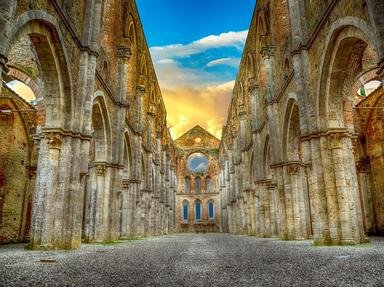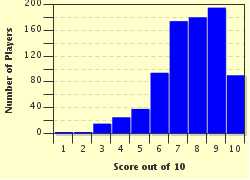Quiz Answer Key and Fun Facts
1. The collapse of which empire signalled the onset of the Dark Ages?
2. In the early stages of the Dark Ages, what was one of the main reasons the invading Germanic tribes were so readily accepted by the people of the lands they invaded?
3. As the invading tribes from the north spread across Europe, new boundaries took shape, in some cases foreshadowing recognizable modern borders. Which groups settled in the area that we know today as France?
4. Many historians debate whether the invasions from the Germanic tribes into Europe in the early days of the Dark Ages were invasions at all. They see their entry into Europe more as a case of which of the following?
5. The church, which played such an enormous part in the lives of people during this period of history, began moving away from a simple form of worship to colourful spectacles and dramatics. What unique structures began to appear in the European countryside in the 6th and 7th centuries?
6. What new religion began to edge its way into the southern parts of Europe during this period?
7. The Dark Ages was a period in history when most of the great cities of Europe were built.
8. Gaul, after its Roman rulers were driven out, was loosely united by the Merovingian dynasty for almost three hundred years, but torn apart by the bitter wars of its descendant family for almost as long a period. What was the name of the dynasty which would spring from this and go on to found a mighty Frankish empire?
9. Which descendant of the Carolingian dynasty was crowned Emperor on Christmas Day, 800?
10. The revival of learning in the 9th century was beset by further barbarian raids by which peoples?
Source: Author
Creedy
This quiz was reviewed by FunTrivia editor
bloomsby before going online.
Any errors found in FunTrivia content are routinely corrected through our feedback system.


